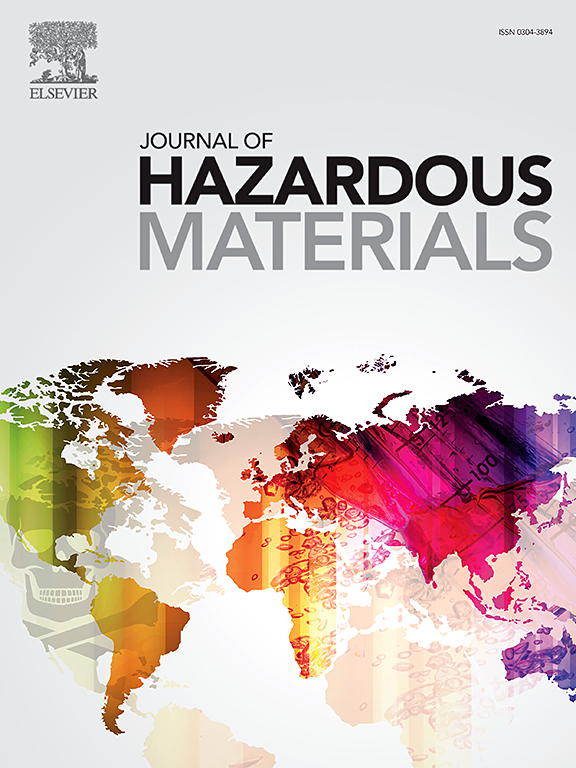Source and Condition Specific Toxicity of Combustion-Derived PM: Linking Physicochemical Properties with Acellular and Cellular Assays
IF 11.3
1区 环境科学与生态学
Q1 ENGINEERING, ENVIRONMENTAL
引用次数: 0
Abstract
This study investigates particulate matter (PM) generated from wood, coal, and bunker fuel combustion under controlled conditions, examining its physicochemical properties, oxidative potential, and cytotoxicity. Hydroxyl radical (•OH) formation was assessed using the TAOH assay, while cellular toxicity was evaluated via MTT and LDH assays in bronchial epithelial cells.Low-temperature wood and coal combustion produced PM rich in redox-active metals (Fe, Cu, Mn), generating high initial •OH through Fenton-like reactions, but with minimal cytotoxicity—likely due to limited cellular uptake or buffering mechanisms. In contrast, bunker fuel PM under running conditions caused strong cytotoxic responses (reduced viability, membrane damage) despite low •OH levels, attributed to elevated Zn and hydrophobic organics (e.g., alkylcyclohexanes, hopanes). High-temperature combustion produced moderate but sustained •OH levels, likely from slowly cycling organics (e.g., PAHs), with limited acute cytotoxicity.These results highlight the complex and source-specific nature of PM toxicity. They underscore the limitations of relying on oxidative potential alone and the need for integrated chemical and cellular assays to better assess health risks and guide targeted emission control strategies.

燃烧衍生的PM的来源和条件特定毒性:将物理化学性质与脱细胞和细胞分析联系起来
本研究研究了木材、煤和船用燃料在受控条件下燃烧产生的颗粒物(PM),研究了其物理化学性质、氧化电位和细胞毒性。使用TAOH法评估羟基自由基(•OH)的形成,而通过MTT和LDH法评估支气管上皮细胞的细胞毒性。低温木材和煤燃烧产生的PM富含氧化活性金属(Fe, Cu, Mn),通过芬顿样反应产生高初始•OH,但具有最小的细胞毒性-可能是由于有限的细胞摄取或缓冲机制。相比之下,尽管•OH水平较低,但运行条件下的船用燃料PM会引起强烈的细胞毒性反应(降低活力,膜损伤),这是由于锌和疏水有机物(如烷基环己烷、藿烷)的升高。高温燃烧产生适度但持续的•OH水平,可能来自缓慢循环的有机物(如多环芳烃),具有有限的急性细胞毒性。这些结果突出了PM毒性的复杂性和来源特异性。它们强调了单独依赖氧化电位的局限性,以及需要综合化学和细胞分析来更好地评估健康风险和指导有针对性的排放控制战略。
本文章由计算机程序翻译,如有差异,请以英文原文为准。
求助全文
约1分钟内获得全文
求助全文
来源期刊

Journal of Hazardous Materials
工程技术-工程:环境
CiteScore
25.40
自引率
5.90%
发文量
3059
审稿时长
58 days
期刊介绍:
The Journal of Hazardous Materials serves as a global platform for promoting cutting-edge research in the field of Environmental Science and Engineering. Our publication features a wide range of articles, including full-length research papers, review articles, and perspectives, with the aim of enhancing our understanding of the dangers and risks associated with various materials concerning public health and the environment. It is important to note that the term "environmental contaminants" refers specifically to substances that pose hazardous effects through contamination, while excluding those that do not have such impacts on the environment or human health. Moreover, we emphasize the distinction between wastes and hazardous materials in order to provide further clarity on the scope of the journal. We have a keen interest in exploring specific compounds and microbial agents that have adverse effects on the environment.
 求助内容:
求助内容: 应助结果提醒方式:
应助结果提醒方式:


